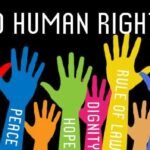Education plays a vital role in stopping human trafficking. By raising awareness, educating vulnerable groups, and providing resources, education can prevent exploitation. In this article, we will explore how education helps combat human trafficking globally.

1. Raising Awareness About Human Trafficking
Education helps raise awareness about human trafficking.
- Schools and universities can teach students about the dangers of trafficking.
- Educational campaigns can inform communities about how trafficking operates.
- Awareness programs help people recognize signs of trafficking in their own lives.
By raising awareness, education empowers people to protect themselves and others from traffickers.
2. Empowering Vulnerable Groups Through Education
Education protects vulnerable groups.
- Vulnerable populations, such as migrant workers and children, are at high risk.
- By providing education, we equip these groups with the knowledge to avoid exploitation.
- Education programs can teach people about their rights and how to seek help.
This protection helps reduce the chances of falling into human trafficking.
3. Training Teachers and Social Workers to Recognize Signs of Trafficking
Teachers and social workers play a critical role in identifying trafficking victims.
- Educating teachers about the signs of trafficking can help identify victims early.
- Social workers can be trained to provide the necessary support to victims.
- Schools can create safe spaces for students to report suspicious activity.
These professionals can intervene quickly, offering assistance and potentially saving lives.
4. Promoting Legal Literacy to Protect People from Traffickers
Education about legal rights is another powerful tool.
- Teaching communities about local laws against trafficking can prevent exploitation.
- People need to know what trafficking is and how the law protects them.
- Legal education also helps individuals recognize when they are being targeted.
Legal literacy ensures that vulnerable people can access the support they need.
5. Creating Awareness in Schools and Universities
Schools and universities are key places to educate young people about trafficking.
- Students learn how traffickers operate and how to stay safe.
- Universities can offer programs and workshops about human trafficking awareness.
- Education institutions can also create networks for students to report trafficking suspicions.
By educating the next generation, we can build a safer world for everyone.
6. Using Media and Technology for Educational Outreach
Education can be expanded through media and technology.
- Social media campaigns and online platforms help spread awareness globally.
- Websites and apps can provide resources for people to learn about human trafficking.
- Interactive tools, videos, and online courses can reach people in remote areas.
By using modern technology, education on human trafficking can reach a wider audience.
7. Teaching Children About Safety and Exploitation
Early education about personal safety can protect children from traffickers.
- Children need to learn how to recognize unsafe situations.
- Schools can teach children about boundaries, self-respect, and how to ask for help.
- Safe education programs can also teach children how to avoid online predators.
By teaching children these crucial lessons, we can prevent them from becoming victims of trafficking.
8. Collaboration Between Educational Institutions and Anti-Trafficking Organizations
Collaborating with anti-trafficking organizations strengthens educational efforts.
- Schools and universities can partner with NGOs to provide expert-led workshops.
- Anti-trafficking organizations can offer materials and resources to schools.
- By working together, both education institutions and NGOs can create a strong network to fight trafficking.
Such partnerships amplify the impact of educational campaigns.
Conclusion
Education is one of the most powerful tools in stopping human trafficking. By raising awareness, empowering vulnerable groups, and teaching legal rights, education helps prevent trafficking and exploitation. Whether through schools, universities, or community programs, education plays a vital role in protecting people worldwide from traffickers.









